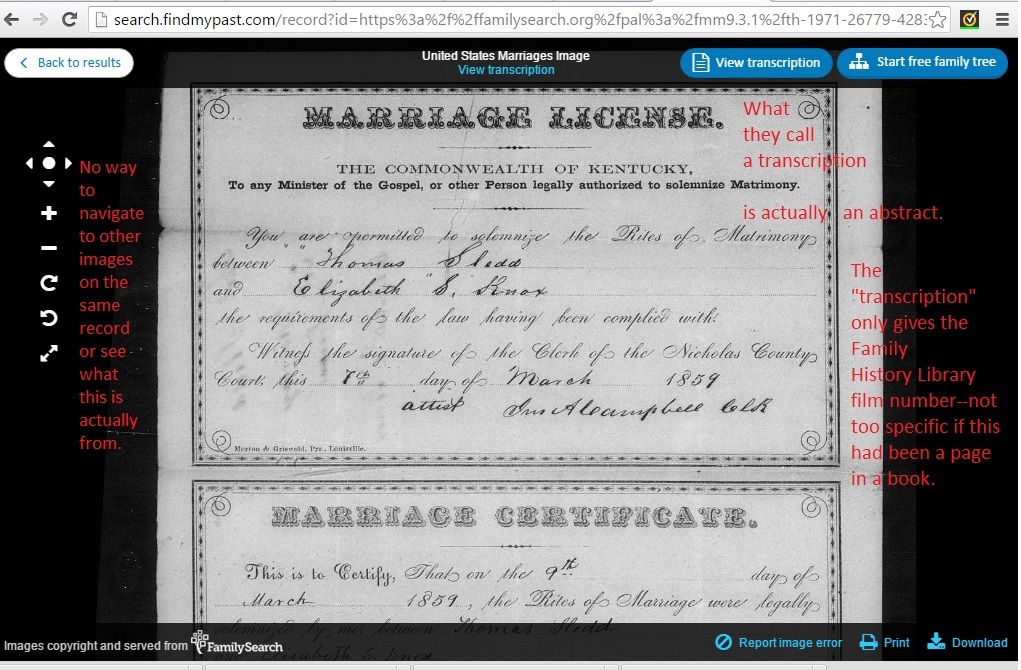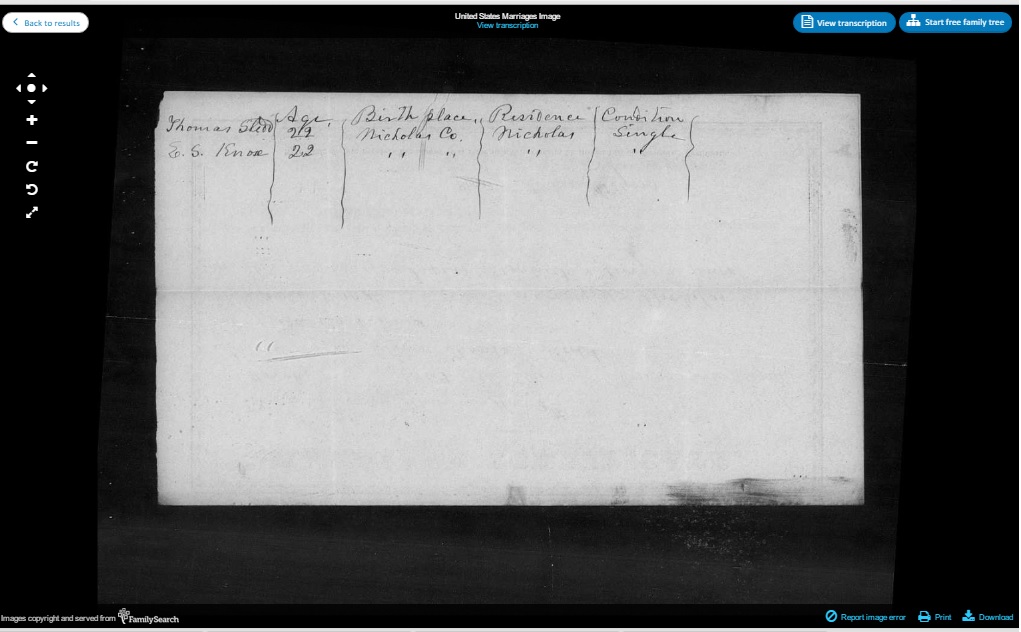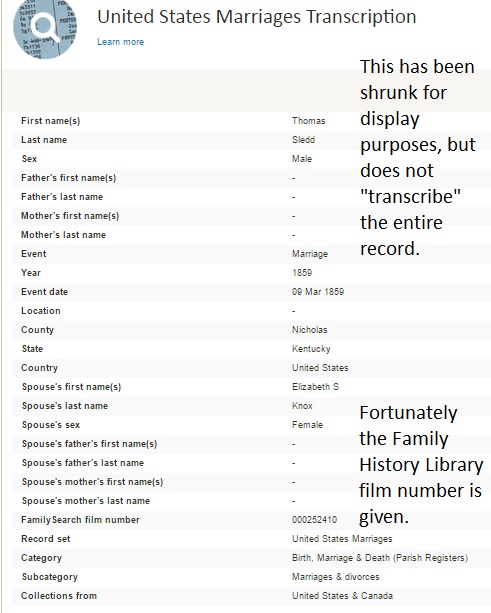Genealogy is about analysis and interpretation. One cannot analyze or interpret if one cannot determine exactly what one is looking at.
That’s the problem with the images of marriage records in the “United States Marriages” on FindMyPast.com. I can guess what am looking at. I may have a good idea what I am looking at. But the fact remains that this index jumps too directly to the image of interest. The image screen does not allow me to view the page or image before the item I have located. The image screen does not allow me to view the page or image after the item I have located. It takes me only to the image the index refers to and that’s it. I can’t move around. I’m stuck on that image. There is no left turn. There is no right turn. There is only reverse.
There’s no way to see the title cards that are a part of virtually every roll of Family History Library microfilm.
There’s no way to see the front cover of the ledger from which the record was taken (in the cases where the images were made from books). If a license was contained in a packet there’s not way to see that packet.
The screen shot illustrates. I can start a “free family tree” but I can’t see what comes on the page before.
One can surmise that the previous image is a marriage license. It still would be nice to be able to cite it in some way shape or form.
This item was located by searching for Thomas Sledd marrying in Kentucky.
This is all that is on the image.
And there is no way to date or source it at all because I cannot navigate. Pretty hard to analyze it when it’s just dropped into my screen.
The folks at FindMyPast.com apparently do not know what a transcription is either.
The “transcription” from FindMyPast is shown below. It is not a transcription. It is an abstract. The definitions I’ve used aren’t ones that I arbitrarily made up for a blog post. They are pretty well accepted in the genealogy community, except for FindMyPast which seems to have it’s own definitions.
Per Evidence Explained (Elizabeth Shown Mills, 3rd edition, 2015, page 832), a transcription is “an exact copy of a record…” and an abstract (page 820 ) is a “condensed version of a record.”
The image on FindMyPast is a duplicate of the record. The “United States Marriage Transcription” would more correctly be termed an abstract.
This may be quibbling about definitions, but using the appropriate genealogical terminology would indicate that the publisher was cognizant of current trends in genealogy methodology and terminology.




5 Responses
FMP do have some odd views of what constitutes “transcription”. In the UK Censuses if a child is under 1 year old the age is entered on the image as e.g. 3 days or 3 weeks or 6 months etc. FMP say that they do have a field which shows these entries as they appear but on the transcript they show the age as 0 (zero). They say that this is in order to calculate the year of birth and to avoid confusing the user/customer/researcher. I have told them that it would confuse no one and that the accurate age is many times more valuable than their calculated year of birth.
They have also said thatit enables people to search by age. Age does not appear on any of their search screens.
This aberration appeared after they revised and “improved” their website in April 2014. I have been complaining since then. My computing experience began over 35 years ago in a government statistics department.
The 2nd image you posted gives no hint at all as to nature of the document, much less any hint of citation content. Not even an image number. Very sloppy work on their part.
The search-results lists I looked at omitted surname of the spouse.
Supposing that eventually FMP will digitize and post images *not* from GSU/FHL microfilms, what will they do then when they cannot copy the FHL extract entries that give at least the microfilm numbers so that one can determine a title or even a source for the documents?
It all looks very cheap and on-the-fly. I believe Tony Proctor posted an experiential critique of FMP’s very poor indexing and source-citing practices a year or so ago on his blog. So this is nothing new to them, and results of improvements are hard to see.
That was my concern with the second image. The first one I can pretty much figure out–but the source would still be nice. The second one is another matter entirely.
I’m not certain what improvements have been made despite criticisms that have expressed.
Quite frankly, FMP is a bust. I can find NO one in the marriage lists, unless it refers back to Ancestry. Which I might add won’t let you look at them unless you buy their sight at a rediculous price.
Just to let you know, I did go to the probate court records at home, that FMP supposedly shows them, and found them.